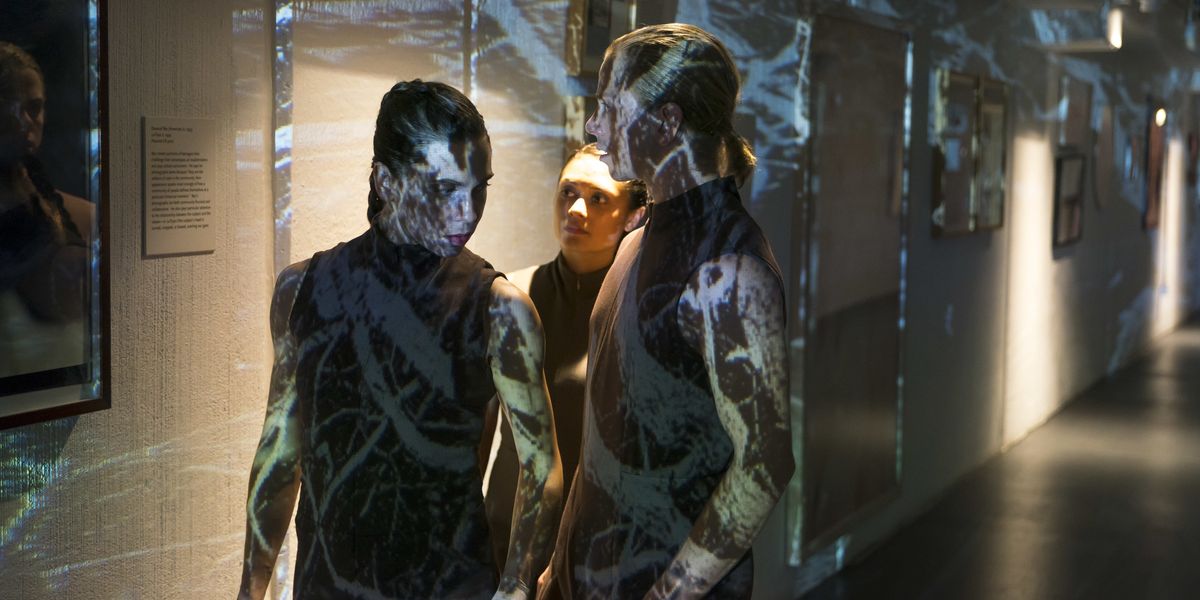Even Big Companies Are Getting Into Site-Specific Work These Days
Donning sneakers, 24 dancers performed the rapid, rhythmic contemporary movement of Benjamin Millepied’s Counterpoint for Philip Johnson during American Ballet Theatre’s fall season. Using members of the ABT Studio Company and Jacqueline Kennedy Onassis School, the commission was an unusual late addition to the program. But even more unusual was its setting: The work was danced not behind the proscenium, but as an intermission interlude on the tiered balconies of the David H. Koch Theater promenade, with the dancers looking down on the patrons from above.
With pieces like Counterpoint at ABT and Peter Chu’s Space, In Perspective at Hubbard Street Dance Chicago, and Paris Opéra Ballet looking to set work in the public spaces of the Palais Garnier this spring, in-theater site-specific works are trending among companies whose seasoned patrons are more used to sitting comfortably in the dark.
Site-specific work isn’t new, particularly among contemporary dance circles. (Case in point: Space, In Perspective was not the first work to take advantage of the Harris Theater for Music and Dance’s non-theatrical spaces.) The scale, however, of these recent efforts from companies who customarily present work in big, proscenium settings is notable. Choreographers are looking to every corner of their home venues, getting off the stage and changing the rules about how theatrical spaces are used.
Similarly to Counterpoint, Chu’s Space, In Perspective used members of the new Hubbard Street Professional Program. The evening-length work asked patrons to “follow a dancer” on unmapped tours through the Harris’ lesser-known spaces, like the loading dock and dressing rooms. The work culminated onstage, with the dancers’ backs to an empty house, audience members close enough to feel their breath.
What patrons couldn’t see or experience were all the logistics: union regulations; safety and security; accessibility and traffic flow; and, of course, the budget. Hubbard Street may have been a bit ambitious about how many patrons they could handle per show; the 400-person attendance cap led to some inevitable chaos. The audience members who got stuck in crowded stairwells (which included this reporter) or standing for long periods of time with an obstructed view of the work may have felt unlucky, or disappointed by the experience.
Indeed, feedback from dance critics ran the gamut, their reactions ranging from enjoyment to frustration. Chu says he would encourage companies to manage the expectations of their audiences beforehand—Do they need to wear comfortable shoes? Should they be prepared to sit on the ground? Edgerton offers, “Underestimate the number of people you can transport through a space.”
But neither is discouraged. Edgerton maintains that challenging Hubbard Street’s audiences is part of the point, and the company is considering touring Space, In Perspective to venues across the country. Millepied, too, has talked of revisiting Counterpoint, perhaps adding to it and making a longer piece out of the original version. “I feel people are playing it safe a lot. If anything, I think it’s the choreographers and the directors who need to make an effort for these dancers who have made this art form their passion,” says Millepied. “There are these environments that are beautiful and theatrical, and with a little bit of work you can create something in them.”




